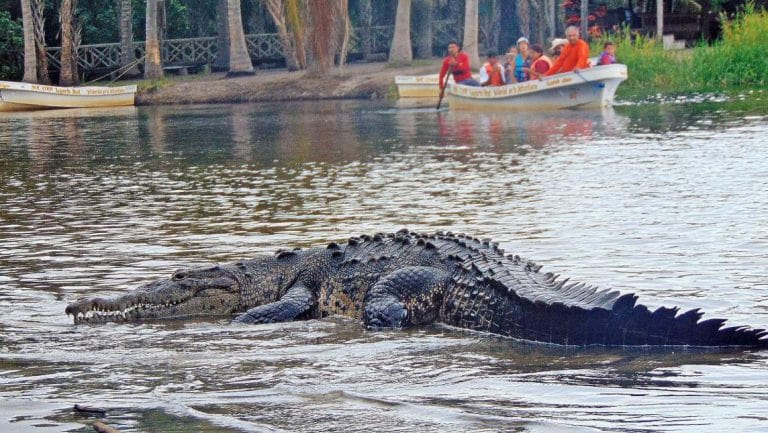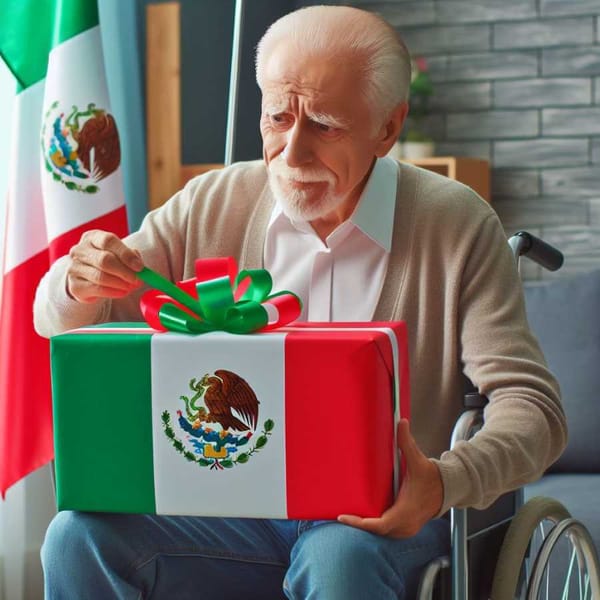Rainy season favors crocodile activity and interaction (attacks)
There is an increased risk of crocodile encounters and possible crocodile attacks on domestic animals or people if their space is invaded.

During the rainy and hurricane season, the amount of water in rivers, streams, and lagoons increases considerably, flooding land used for cattle grazing and agriculture, as well as homes located near bodies of water.
Under these conditions, the crocodiles that are found naturally on the coast of Oaxaca are more likely to move to the sites that are now covered by water. Given these circumstances, the crocodiles, most of the time in a circumstantial way, can have an encounter with domestic animals, livestock, and even people.
Crocodiles are animals that avoid contact with humans, do not socialize even with other species, and only attack when in danger. They attack when their space is invaded or they have nothing to eat, that is why their attacks are always inside the water, in their ecosystem. Encounters between reptiles and humans are "casual"; the reptile does not see humans as prey.
Crocodiles instinctively shy away from saltwater, so they do not stay for a long time in the sea, they only get there by displacements when the water level rises, as has happened on the beaches of Santa María Tonameca, Zipolite, San Agustinillo, Mazunte, and Agua Blanca. In general terms, the presence of crocodiles on the beaches is not dangerous, unless people disturb them.
Children should not be allowed to play or go near the bodies of water; swimming should be avoided until it is known that there are no crocodiles present.
The incidence of crocodile attacks in many countries, including Mexico, is extremely difficult to quantify, in part because many of these encounters go unreported. Many of these events are recorded with fishermen, who use the trammel net as fishing gear; the light radiating from the fish in the net attracts the crocodile to feed.
The study Evaluation and definition of strategies to address human-crocodile interaction on the coast of Oaxaca refer that the origin of these conflicts arises when they share the same habitats and resources; however, "they stand out when the needs and behavior of wild animals have a negative impact on the lives of humans and, consequently, the extermination of the animals is sought as an emotional response to the event".
Prehistoric creatures
Crocodiles are prehistoric creatures, descended from dinosaurs, and are considered to live a maximum of 130 to 150 years. After mating, females lay their eggs on land at a height of four to six meters above the water level; the quantities are variable since females lay from 25 to a maximum of 60 eggs.
Incubation can last from 75 to 90 days due to temperature changes; this climatic factor determines sex. At temperatures above 34 degrees they are males, and below 34, females. Most of the eggs hatch, but by nature, out of every 100 crocodile hatchlings that enter the lagoon, 1 to 3 are guaranteed to survive, as they are prey for birds, and there is cannibalism among them, the larger ones eat the smaller ones, which maintains a stable population.
Conservation actions
Rogelio Reyes Rosales, manager of the Coastal Wetlands Network, explains that in order to generate conservation and prevention actions in the interaction between humans and crocodiles, the Oaxaca State Crocodile Committee was formed with the participation of state institutions, municipal authorities, representatives of civil environmental associations and academics.
"The committee was created due to the constant occurrence of crocodile attacks on residents living in the wetlands of the Oaxaca Coast".
The members of the committee have outlined the lines of action they will undertake in terms of prevention, governmental coordination, and conservation of the species, which will favor the sustainable development of the populations. The committee is made up of representatives of environmental sector institutions, such as the clean beaches committees of San Pedro Mixtepec and Santa María Colotepec; municipal authorities, agrarian organizations, Civil Protection, as well as civil, academic, and social associations.
Among the members of the committee is the La Ventanilla Cooperative, located in Santa María Tonameca, an outstanding environmental management unit specializing in the management of river crocodiles, olive ridley turtles, white-tailed deer, and red mangrove. It receives more than 20,000 tourists per year who are attracted to observe the crocodiles in their habitat; its philosophy is to promote human-crocodile interaction.
Findings
The appearance of crocodiles in bodies of water other than lagoons is not a new fact, every year during the rainy season such findings are registered due to the increase of the water level in rivers, streams, and lagoons, as well as the opening of bars, which displaces and removes the animals from their habitat.
Crocodiles are cold-blooded; their maximum body temperature is 40 degrees Celsius (104 degrees Fahrenheit), so they seek regular temperature waters and do not inhabit the warm waters of the Pacific. However, changes in land use, the effects of climate change, and lack of food force them to migrate to places outside of their habitat.
Risk of extinction
Lagunas de Chacahua National Park is part of the lagoon complex La Pastoría - Chacahua - Las Salinas, and has an area of almost 15,000 hectares, including dry land and coastal lagoons; it was elevated to the category of National Park in July 1937.
Since the 1970s it has hosted a crocodile farm due to the ban established by the Mexican State due to the risk of extinction of the species, so the swamp crocodile (Crocodylus moreletii) was introduced, which joined the two historical species in Oaxaca, the river crocodile, and the caiman.
Recommendations
Do not allow infants to play or go near bodies of water, whether permanent or temporary.
Avoid swimming in bodies of water, even if it is previously known that crocodiles have not been present in these places.
Do not leave pets or domestic animals near permanent or temporary bodies of water.
In case of observing a crocodile near or within the locality, do not disturb it (do not throw sticks or stones at it), do not feed it, and do not try to handle it without proper training.
It is recommended that local authorities (municipalities, agencies, communities, and ejidos), in coordination with local civil protection authorities and the most knowledgeable citizens of each territory, carry out general surveys to locate animals that may pose a risk to the population. In the case of crocodile sightings in unusual places, it is recommended to notify Civil Protection at 018001707070.




